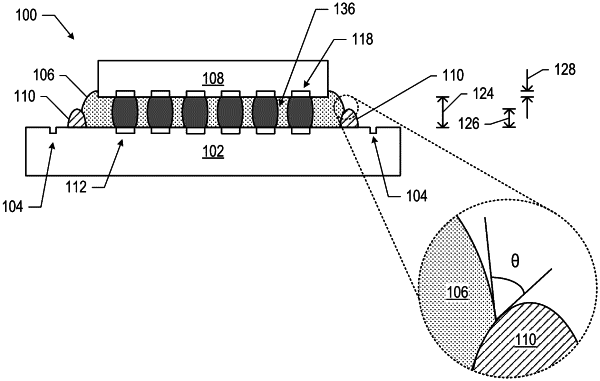| CPC H01L 24/32 (2013.01) [H01L 23/293 (2013.01); H01L 23/3157 (2013.01); H01L 24/29 (2013.01); H01L 24/16 (2013.01); H01L 24/73 (2013.01); H01L 2224/16227 (2013.01); H01L 2224/29191 (2013.01); H01L 2224/32225 (2013.01); H01L 2224/73204 (2013.01); H01L 2924/0675 (2013.01); H01L 2924/0715 (2013.01)] | 16 Claims |

|
1. An electronic assembly, comprising:
a first component;
a second component;
an underfill on the first component and at least partially between the first component and the second component; and
a material at a surface of the first component, wherein the material is outside a footprint of the second component, and the underfill contacts the material with a contact angle greater than 50 degrees;
wherein the material includes a silicone, a polyurethane, a polyolefin, or an elastomer.
|